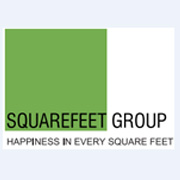
Upcoming Office Design Trends To Look Out For
There is no denying that the world is undergoing some fundamental changes in how we work. Amidst all these changes, it is time for the workplace to change once again. As technology evolves, new business needs arise, and employee outlook, office layout and design must change in tandem. Breaking away from the clutches of cables and cubes, workplaces are becoming smarter and safer.
The COVID-19 pandemic disrupted work and compelled organizations to rethink how the office space looks when employees return. Isolated and burnt out, employees are coming back to the office after a long hiatus with all-time low engagement levels. As organizations and employees navigate the new normal, the workspace should empower them to tackle challenges, enhance efficiency and unlock their maximum potential. The upcoming office design trends should put greater focus on productivity, collaboration and engagement while zeroing in on hygiene, safety and sustainability.
Hybrid workplaces
Before the global pandemic, office spaces were designed to meet the needs of the employees on-site at any given time. But, the rise in hybrid work models will influence how the office is designed to accommodate both the on-site as well as the remote workforce. This involves rethinking spaces to incorporate booths and benches with power and data integration, larger breakout and touchdown areas and audio-visual (AV) meeting and training rooms that support virtual collaborations among employees regardless of their location. With teams distributed across geographies, the office design should embrace a borderless and digital environment that elevates collaboration and innovation.
The arrival of smart offices
As organizations ramp up their digital transformation efforts, technology is bound to permeate the office design. Smart technologies such as touchless sensors, data sharing tools and desk booking apps will enable employees to move freely across the workplace while maintaining social distance. By harnessing these smart technologies, organizations can elevate flexibility and comfort and maintain a smooth flow of staff. Offices equipped with smart technologies will also open doors to seamlessly collaborate with the remote workforce through digital connectivity, Wi-Fi, and other mobile apps.
Smaller cabins and conference rooms
The post-pandemic workspace mandate is de-densification. As many organizations embrace hybrid work and allow employees to telecommute, the new office design will incorporate smaller, more dynamic spaces. With smaller cabins and conference rooms, three to four employees can work simultaneously while maintaining social distance and communicating with remote teams. Moreover, employers can add office pods to their workplace that provide privacy to work solitary and enhance focus. Instead of having open areas or large conference rooms, organizations could use smaller meeting rooms equipped with motion or touchless sensors to ensure employees' connectedness and collaboration.
One size does not fit all
The post-pandemic world of work is all about thinking outside the box and moving beyond the one-size-fits-all approach. Now is the time to experiment with office design and incorporate dynamic spaces and variable seating into the office. Prolonged sitting in fixed chairs glued to their screens can cause employees to develop unhealthy postures and spinal health concerns. Instead, organizations should offer them variable seating options that suit all work styles and types, enhance flexibility and encourage movement. Dynamic work settings will allow employees to collaborate, concentrate, connect and recharge to be productive.
Let the walls speak
Meaningful interior design can help organizations convey their brand story, message or culture to engage employees and visitors and showcase artwork. Including wall coverings, artwork, or contemporary design elements will allow offices to communicate the brand vision and core values and create a lasting impact. At the same time, organizations can inspire creativity and innovation amongst employees and help boost productivity in the workplace. Additionally, organizations can add colour to the walls to brighten things up and make employees feel more energized and happier.
There is no denying that the pandemic has shifted our outlook and opinions on office design trends over these last two years. In a constant state of flux, the spaces that employees work in every day should work the best for them. Smart offices, dynamic seating options, smaller conference rooms and unconventional designs will allow organizations to elevate their space and improve the happiness and healthiness of their workforce.
Also read: 10 Interesting Ways To Use The Corners Of Your House
Source - 99acres.com
Back to All: Thane Real Estate Resources, Thane Property News and Articles






